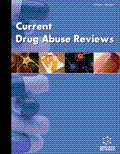Abstract
As a result of the lethal effect that alcohol has had on the American Indian and Alaska Native population, it is vital to aggressively screen for hazardous/harmful use, alcohol abuse and dependence among American Indian/Alaska Natives entering medical settings. This is especially true in primary care settings where individuals may come in for a host of medical problems and may not be directly seeking help in reducing their use of alcohol. There are a number of strategies to screen for hazardous/harmful use and abuse of alcohol in primary care settings. These strategies include: screening questions/questionnaires, biochemical markers and collateral information. There is a growing body of literature which validates the use of some of the standard screening questionnaires among adult American Indians and Alaska Natives including the AUDIT and CAGE. Additionally, there are two instruments that have been validated in two vulnerable American Indian and Alaska Native populations: adolescents and pregnant women. These instruments are the CRAFFT for adolescents and the SAQ for pregnant women. There are currently no studies that were identified in this review that looked specifically at biochemical markers for American Indian and Alaska Natives. Finally, it is important to interview a patients collaterals both to identify early problems with alcohol and as an adjunct to engaging the patient into treatment. Supportive collaterals can assist the patient to decrease or stop the use of alcohol and engage in treatment.
Keywords: American Indian, Alaska Native, alcohol, screening, AUDIT, CAGE, collateral information, biochemical, drug abuse, drinking
 24
24















